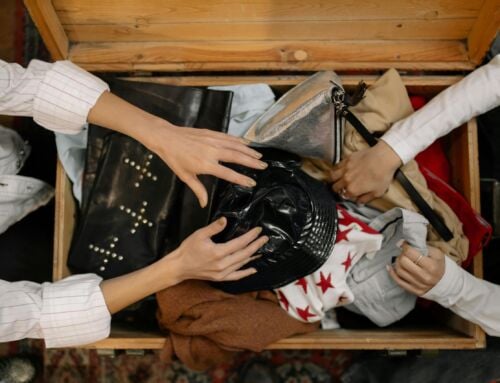In the fashion world, ecology is on everyone's mind more than ever, and the various players are vying to be as green as possible. The latest Fashion Weeks are a good example of this, with more and more designers using this platform to get their ecological message across. Let's take a look at these different positions and what we can say about them.
Endless promises...
Ecological awareness got off to a flying start, with 32 fashion giants presenting the «Fashion Pact» on the sidelines of the G7. This far-reaching initiative aims to set common objectives for all players in the fashion industry. These objectives aim to reduce the environmental impact of the world's second most polluting sector.
In their own way, many designers have also tried to raise awareness of environmental issues. For example, designer Francesco Risso decided to use only recycled fabrics to make the collection he presented at Milan FashionWeek. Then there's Roman designer Tiziano Guardini, who creates sustainable collections. There are many other cases in point, and a large number of players seem to have understood the issues at stake and are trying to change on their own scale.
... and achievable?
Of course, small-scale promises are easily realized. And with fast-fashion, all designers could use recycled fabric to make their collections. But some initiatives go further than that, promising ever more ambitious action.
As for the Fashion Pact, we applaud the initiative of bringing together so many players in the fashion industry in such an ambitious project. For example, the pact plans to achieve 100% of renewable energy by 2030 through their own operations. While the intention is laudable, it's hard to see how they will achieve this goal. The project is realistic, but would require considerable logistical effort. It should be remembered that in France, renewable energies account for 10% of what we consume, and electricity is mainly produced by nuclear power plants, and therefore non-renewable.
Without colossal investments in renewable energies, it's hard to see how the Fashion sector will manage to achieve this goal, which would be tantamount to doing without electricity and petrol.
And if we want to be picky, we could also say that Mode will have to do without indirect uses of oil, such as plastics.
The Fashion Pact also aims to achieve carbon neutrality by 2050. Carbon neutrality means producing no more CO2 than the planet can absorb, i.e. 3 billion tonnes worldwide.
With a current world population of 7.55 billion, this means that each person could produce just 390 kilos of CO2 per year to achieve carbon neutrality.
In France, CO2 production is 4.38 tonnes per year per inhabitant. This means that to achieve carbon neutrality, every French person would have to reduce their emissions by a factor of 11! Sound impossible? Then imagine the USA, which would have to reduce its emissions by a factor of 38!
And these calculations are only valid if the population remains stable, because if the forecast of 10 billion people by 2050 comes true, France will have to reduce its emissions by a factor of 15 and the USA by a factor of 50!
Under these conditions, it is clear that this objective will not be easy to achieve. Solutions to reduce CO2 emissions do exist, but as with renewable energies, they will require considerable investment that is difficult to quantify. Fortunately, the solutions to these two problems are similar, and the world of fashion will be able to kill two birds with one stone by reducing its carbon footprint and using less fossil fuels, notably by favoring short distribution channels.
Solutions adapted to today's challenges?
In the 21st century, humanity's main challenges will be to do without fossil fuels and reduce carbon emissions. The Fashion Pact therefore seems the perfect answer to these challenges.
Let's not forget that if we do nothing, the most optimistic scientists agree that the average temperature will rise by 4°C by 2100, which will drastically change living conditions on earth.
All initiatives are therefore good to take to avoid the worst, no matter how big or small. So whether it's independent designers or large-scale initiatives like Fashion Pact, we wish them every success in changing themselves and the world around them.




